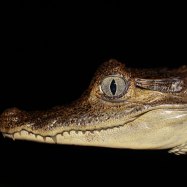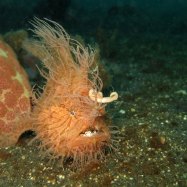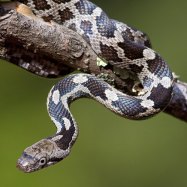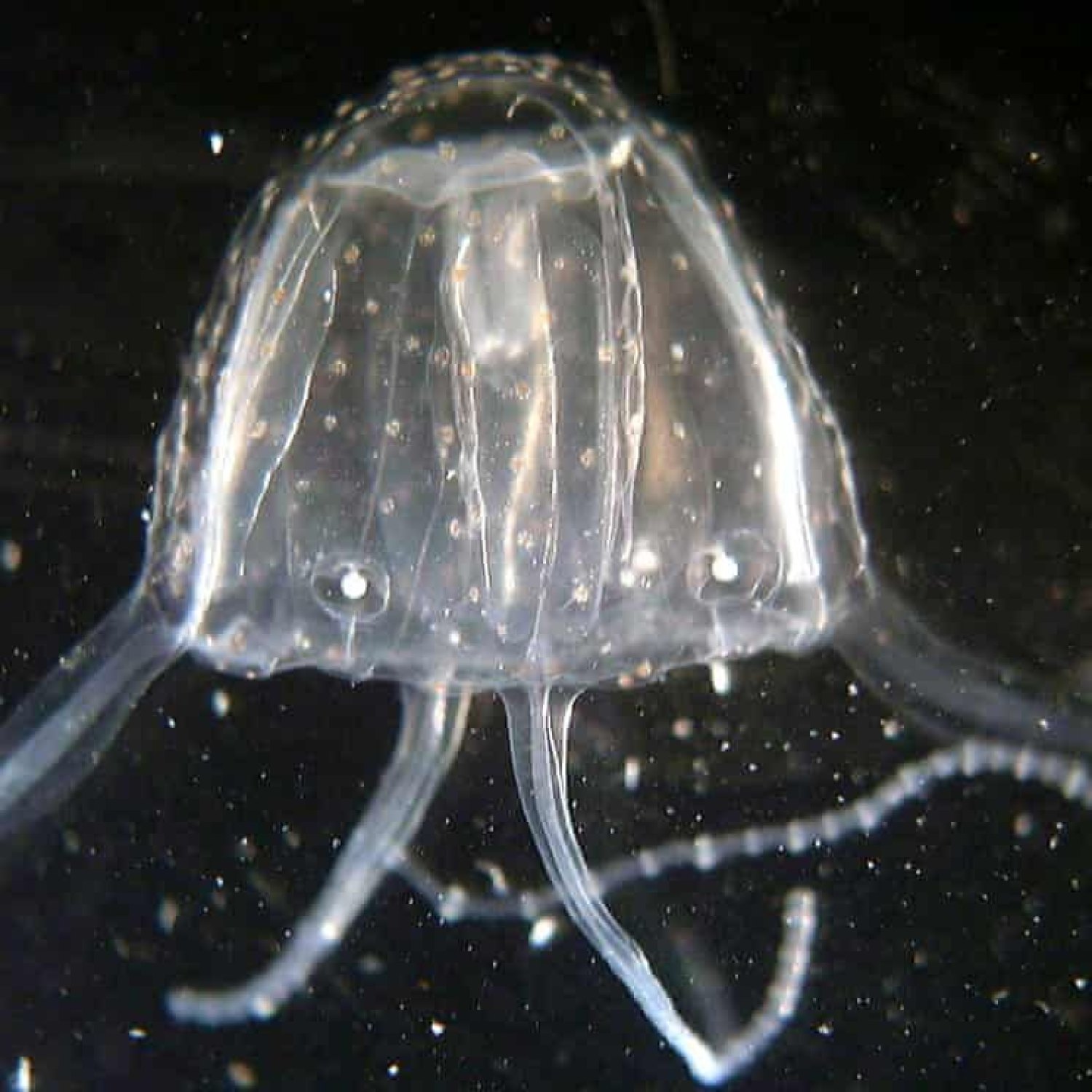
Irukandji Jellyfish
Approximately 1 cm
Did you know that the tiny but deadly Irukandji Jellyfish resides in the waters of Northern Australia? This bell-shaped creature measures only 1 cm in length but packs a powerful venom, making it one of the most dangerous marine animals. Beware when swimming in these waters! #Irukandji #Australia #marinelife
Animal Details Summary:
Common Name: Irukandji Jellyfish
Kingdom: Animalia
Habitat: Marine
The Mysterious and Deadly Irukandji Jellyfish: An Enigma of the Ocean
The ocean holds many secrets, and its creatures never cease to amaze us. One such creature is the Irukandji Jellyfish, also known by its scientific name Carukia barnesi. This small but deadly jellyfish is the epitome of natural perfection, with its unique features and mysterious behavior. From its habitat to its feeding habits, this jellyfish has captured the attention of scientists and enthusiasts alike Irukandji Jellyfish.The Animal Kingdom: Cnidarians and Cubozoans
The Irukandji Jellyfish belongs to the kingdom Animalia, a diverse group including all animals. However, within this kingdom, it is classified as a cnidarian. Cnidarians are ancient marine animals that have been around for at least 700 million years. They are characterized by their tissue-level organization, radial symmetry, and stinging cells called cnidocytes.Within the phylum Cnidaria, the Irukandji Jellyfish belongs to the class Cubozoa, also known as box jellyfish. This class includes around 50 species of box jellyfish, all known for their distinctive cube-shaped bell and potent venom. These cnidarians are found predominantly in the coastal waters of tropical and subtropical regions, including Australia, the Indo-Pacific, and the Caribbean.
The Lethal Order: Carybdeida
The Irukandji Jellyfish belongs to the order Carybdeida, which includes other deadly box jellyfish like the infamous "sea wasp" (Chironex fleckeri). This order is also known as the "true" box jellyfish, as they possess some unique characteristics that differentiate them from other cnidarians and box jellyfish species Irish Wolfhound.One of these characteristics is the presence of a special sensory organ called the "operculum," which is used for balance and orientation. This structure is also responsible for the unique pulsations and swimming movements of the Irukandji Jellyfish, making it almost invisible in the water.
A Family of Its Own: Carukiidae
While the Irukandji Jellyfish belongs to the order Carybdeida, it has its own family called Carukiidae. This family includes only two known species, one being the Irukandji Jellyfish (Carukia barnesi), and the other being the related Keesingia gigas.These two species are closely related and are believed to have diverged from a common ancestor around 30 million years ago. They share similar features, including their small size, transparent body, and potent venom. However, there are still many mysteries surrounding these elusive creatures, including their reproductive habits and natural behaviors.
A Magnificent Marine Habitat
The Irukandji Jellyfish is a marine animal, meaning it lives in the ocean. However, its habitat is diverse and includes both coastal and offshore regions. It is predominantly found in the northern Australian waters, particularly in the Great Barrier Reef, but has also been sighted in nearby areas such as Indonesia and Papua New Guinea.These jellyfish are known to thrive in warm, tropical waters with temperatures ranging from 24 to 30 degrees Celsius. They are also often found in areas with high concentrations of the microscopic plankton they feed on. While their exact distribution is still not fully understood, their presence in these waters has made them a major concern for swimmers and divers.
Carnivorous Diet: A Deadly Feast
Just like other cnidarians, the Irukandji Jellyfish is a carnivore, meaning it feeds on other animals. However, its diet is a little more specific, as it solely preys on plankton. These tiny organisms are the perfect prey for the small jellyfish, as they provide the necessary nutrients and energy for its survival.The Irukandji Jellyfish captures its prey using its venomous tentacles. The venom, which is released through the cnidocytes, paralyzes and immobilizes the prey, making it easy for the jellyfish to consume. While this venom is potent enough to kill its prey, it is also deadly to humans and can cause severe symptoms in humans if stung.
The Elusive Australian Native
The Irukandji Jellyfish is a species native to Australia and is believed to have been discovered in the late 19th century by the Australian marine biologist Jack Barnes. However, it was not until the 1950s that it was identified and named after him.These jellyfish are commonly found in the northern regions of Australia, with most sightings occurring between November and May. However, due to their small size and transparent appearance, they often go unnoticed, adding to their elusive nature.
A Transparent Beauty
One of the most striking features of the Irukandji Jellyfish is its transparent body and tentacles. This feature makes them almost invisible in the water, making them difficult to spot and avoid. This camouflage adaptation serves as a defense mechanism against their predators, including fish and other marine creatures.Aside from their transparent color, these jellyfish also have small, white spots on their bell, which can be used to identify them from other related species. These spots are believed to be photoreceptors, helping the jellyfish detect light and changes in their surroundings.
A Tiny Terror: Size and Shape
The Irukandji Jellyfish is a relatively small creature, measuring only about 1 cm in length. This size makes them almost impossible to spot in the water, adding to their lethal reputation. However, despite their tiny nature, these jellyfish are still considered a significant threat to humans due to their potent venom.In terms of shape, the Irukandji Jellyfish has a bell-shaped body, which is typical of most jellyfish. However, its bell is more cube-shaped, with rounded corners, making it stand out from other box jellyfish species. This shape also adds to its hydrodynamic capabilities, allowing it to swim quickly and effortlessly.
The Inevitable Encounter with the Irukandji Jellyfish
Despite its elusive nature, the Irukandji Jellyfish has caused alarm and fear among beachgoers, swimmers, and divers, mainly due to the potentially fatal consequences of a sting. These jellyfish are known for their severe stings, which can cause a condition known as "Irukandji Syndrome."Irukandji Syndrome is characterized by a variety of symptoms, including severe pain, nausea, vomiting, sweating, anxiety, and restlessness. In some extreme cases, it can also lead to pulmonary edema, heart failure, and even death if left untreated.
What to Do If Stung by an Irukandji Jellyfish?
While avoiding these tiny jellyfish is the best solution, it is still possible to encounter one while swimming or diving in their habitat. If stung, it is crucial to seek medical attention immediately and avoid trying to treat the sting yourself.The most common treatment for a Irukandji Jellyfish sting is the administration of antivenom. This venom has been developed using the toxin extracted from the jellyfish and has proven to be effective in treating Irukandji Syndrome.
The Fascinating Mystery of the Irukandji Jellyfish
The Irukandji Jellyfish is an enigma of the ocean, with its unique features, elusive nature, and mysterious behavior. While its venom can be lethal to humans, it is still a fascinating and essential part of the marine ecosystem. As scientists continue to study and unravel its secrets, we can only admire this tiny but deadly creature from a safe distance.

Irukandji Jellyfish
Animal Details Irukandji Jellyfish - Scientific Name: Carukia barnesi
- Category: Animals I
- Scientific Name: Carukia barnesi
- Common Name: Irukandji Jellyfish
- Kingdom: Animalia
- Phylum: Cnidaria
- Class: Cubozoa
- Order: Carybdeida
- Family: Carukiidae
- Habitat: Marine
- Feeding Method: Carnivorous
- Geographical Distribution: Northern Australian waters and nearby areas
- Country of Origin: Australia
- Location: Northern Australian waters
- Animal Coloration: Transparent body and tentacles
- Body Shape: Bell-shaped
- Length: Approximately 1 cm
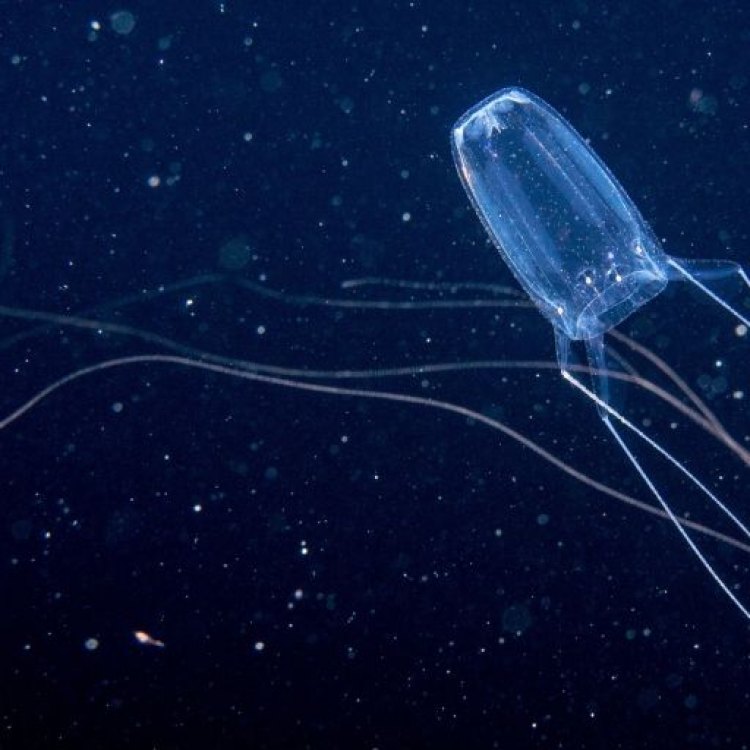
Irukandji Jellyfish
- Adult Size: Approximately 1 cm
- Average Lifespan: 2-3 months
- Reproduction: Sexual
- Reproductive Behavior: Fertilization occurs externally
- Sound or Call: None
- Migration Pattern: Non-migratory
- Social Groups: Solitary
- Behavior: Passive
- Threats: Predation, pollution, habitat loss
- Conservation Status: Not evaluated
- Impact on Ecosystem: Can have a significant impact on marine ecosystems due to its venomous stings
- Human Use: None
- Distinctive Features: Venomous stings, bell-shaped body with transparent tentacles
- Interesting Facts: Irukandji jellyfish are one of the smallest and most venomous jellyfish species in the world. Their venom can cause Irukandji syndrome, which includes symptoms like severe pain, vomiting, sweating, and an increase in heart rate and blood pressure.
- Predator: Predatory fish

Carukia barnesi
The Tiny Yet Deadly Irukandji Jellyfish: An Intriguing Species of the Ocean
The ocean is full of fascinating and mysterious creatures, each with their unique features and behaviors. Among them, the Irukandji Jellyfish stands out as one of the most intriguing and feared species. This tiny jellyfish, measuring only 1 cm in size, is known for its venomous stings and the potentially fatal Irukandji syndrome. In this article, we will unravel the secrets of this mysterious creature, from its behavior and habitat to its impact on the marine ecosystem PeaceOfAnimals.Com.A Small but Mighty Creature
The Irukandji Jellyfish (Carukia barnesi) is a tiny and delicate creature that inhabits the Australian waters, particularly in the northern parts of Queensland and Western Australia. It belongs to the family Carukiidae, and its scientific name is derived from a famous Aboriginal tribe, the Irukandji people, who lived in the area where the jellyfish was first discovered.Measuring only 1 cm in diameter, the Irukandji jellyfish can be easily overlooked due to its size. However, its bell-shaped body and long, transparent tentacles make it distinct from other jellyfish species. The adult Irukandji jellyfish can also be identified by its four horseshoe-shaped venomous organs located at the base of its tentacles. These organs, called nematocysts, are responsible for the jellyfish's potent venom and its ability to inflict severe pain to humans.
A Short but Remarkable Lifespan
Despite its small size, the Irukandji jellyfish has a relatively long lifespan compared to other jellyfish species. On average, it lives for 2-3 months, significantly longer than the typical 2-3 days lifespan of most jellyfish. However, the exact lifespan of this species in the wild is still unknown as they are difficult to study due to their small size and elusive nature Icelandic Sheepdog.Solitary and Passive Behavior
One of the most intriguing facts about the Irukandji jellyfish is its behavior. Unlike most social jellyfish that form large swarms, these tiny creatures are solitary. They do not interact or move in groups, and instead, prefer to drift in the oceans, relying on tides and currents to transport them.The Irukandji jellyfish exhibits passive behavior, which means they do not actively hunt or chase prey. They rely on their venomous stings to immobilize their prey, typically small fish and plankton, and then use their long tentacles to pull them towards their mouth.
Reproduction and Fertilization
Like most jellyfish species, the Irukandji jellyfish has separate male and female individuals, and they reproduce sexually. However, one unique aspect of their reproductive behavior is fertilization, which occurs externally.During mating, the male releases sperm into the water, and the eggs are fertilized as they pass by. The fertilized eggs develop into larvae, which attach themselves to a suitable surface and grow into baby jellyfish, known as polyps. The polyps eventually transform into adults, and the cycle repeats.
Threats to Survival
Despite their potent venom, the Irukandji jellyfish is not at the top of the food chain. Larger predatory fish, such as tuna, sunfish, and mackerel, can prey on them. However, the biggest threats to their survival come from human activities.Pollution, particularly from oil spills and plastic waste, can harm the delicate nature of these creatures, affecting their reproductive capabilities and causing illness and death. Habitat loss due to coastal development also poses a significant threat to their survival. As the ocean continues to face increasing degradation, the future of the Irukandji jellyfish remains uncertain.
Not Yet Evaluated for Conservation Status
Despite the threats to their survival, the Irukandji jellyfish has not yet been evaluated for conservation status. This is mostly due to the difficulties in studying these elusive and minuscule creatures. Without enough data to determine their population size and trends, it is challenging to assess their risk of extinction accurately.However, with the growing global concern for marine life and increased efforts in studying and protecting these creatures, the Irukandji jellyfish may soon receive the conservation status it deserves.
Impact on Ecosystems
While the Irukandji jellyfish may seem like a small and insignificant creature, its venomous sting can have a significant impact on the marine ecosystem. According to research by the University of Sydney's School of Biological Sciences, the introduction of Irukandji jellyfish into a new ecosystem can cause a "trophic cascade," meaning it disrupts the food chain, leading to significant changes in the ecosystem.The venom from these tiny jellyfish can kill small fish and plankton, which in turn reduces the food source for their predators. This can trigger a chain reaction, causing a decrease in fish populations and affecting the entire food web.
Irukandji Syndrome: An Unusual and Devastating Illness
The Irukandji jellyfish's venom is not only dangerous to its prey but can also cause severe harm to humans. A sting from this tiny creature can result in a condition known as Irukandji syndrome, named after the Aboriginal tribe that gave the jellyfish its name.This syndrome is characterized by excruciating pain, muscle cramps, nausea, vomiting, sweating, and an increase in heart rate and blood pressure. In severe cases, it can also cause pulmonary edema, cardiac arrest, and death. The symptoms can occur within minutes of the sting and can last for several days.
No Human Use for the Irukandji Jellyfish
Despite its unique features and potentially life-threatening venom, the Irukandji jellyfish has no known human use. Unlike other jellyfish species, it is not eaten in any culture, nor is it used for medicinal or commercial purposes. Its venom has also not been studied extensively for medical or scientific purposes due to the challenges of obtaining and studying these elusive creatures.Predators of the Irukandji Jellyfish
While the Irukandji jellyfish may have potent venom, it is not invincible. It falls prey to several predators in the ocean, including larger fish species such as tuna, sunfish, and mackerel, which feed on them. These predators are immune to the jellyfish's venom and use their size and strength to overpower them.Conclusion
The Irukandji Jellyfish is truly a remarkable and intriguing species. Despite its small size, it possesses unique features and behaviors, and its venom can have a significant impact on the marine ecosystem and human health. Yet, it remains largely mysterious and elusive, making it a challenging creature to study and understand fully.As we continue to explore and protect the ocean and its inhabitants, the Irukandji jellyfish serves as a reminder of the delicate balance of life in the sea. Though small and seemingly insignificant, this tiny creature plays a vital role in maintaining the health and equilibrium of marine ecosystems. It is our responsibility to ensure its survival and coexistence for years to come.

The Mysterious and Deadly Irukandji Jellyfish: An Enigma of the Ocean
Disclaimer: The content provided is for informational purposes only. We cannot guarantee the accuracy of the information on this page 100%. All information provided here may change without prior notice.




